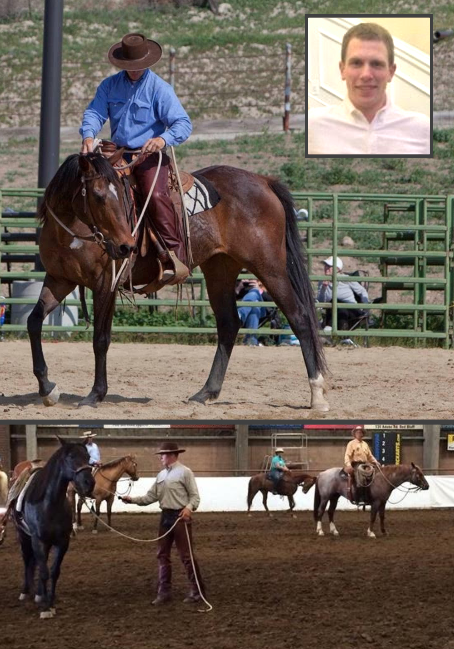Equine trainer and clinic facilitator Nathan Greiner views his experience with stuttering therapy the same way he views how to effectively handle, care, and train challenging horses.
To achieve successful outcomes, he believes the root cause of the problem must be addressed rather than treating the symptoms with a temporary solution.
Three years ago, Nathan left an enviable position after 15 years with Fareway Stores, where his father serves as president, for a once-in-a-lifetime opportunity to follow his passion for horses.
He went to work for world-renowned horsemanship master Buck Brannaman. Brannaman inspired the character of Tom Booker in the Nicholas Evans novel The Horse Whisperer and the movie by the same name that starred Robert Redford.
Nathan now travels the country organizing and staging Brannaman’s sought-after equine training clinics.
When he started working with Brannaman, Nathan noticed his life-long stuttering condition was becoming more pronounced. In the past, he masked his stuttered speech by controlling his environment and using word-substitution techniques.
Yet, the travel and physical demands of his new position, coupled with the need to continually communicate with up to 50 clinic participants at any given time, took their toll on his speech.
Over the years, Nathan participated in traditional stuttering therapy and met with a speech therapist one or two days a week for a period of time. Yet, the time and money he invested in treatment did not yield the fluency results he wanted.
“I was living with my stuttering and not addressing it. I got to the point that I didn’t want to grow old and regret the way I talked,” Nathan said.
Then, Nathan learned about Hollins Communication Research Institute (HCRI) and the nonprofit center’s unique approach to stuttering therapy. He saw an online video of TV broadcaster John Stossel discussing his former stuttering condition and participation in an intensive stuttering treatment program at HCRI. Stossel’s confident, commanding speech style and HCRI therapy experience resonated with Nathan. He contacted HCRI and enrolled in the therapy program.
According to HCRI President Ronald L. Webster, Ph.D., HCRI stuttering therapy is markedly different than traditional speech therapies for stuttering. “Our early research demonstrated that stuttering is physically based and needs to be treated at the muscular level. As a result, we used scientific principles to create, research and refine a comprehensive behavioral therapy program that addresses the problem of stuttering exactly where and when it occurs.”
HCRI stuttering therapy is an intensive program that teaches people who stutter how to replace faulty speech muscle movements, which cause the prolongations, repetitions and blocks of stuttering, with new muscle behaviors that produce fluent speech.
Specially trained clinicians conduct HCRI’s 12-day program in a small group setting at the institute’s headquarters in Virginia. Proprietary fluency training tools and therapy technology are used during the treatment process, which make acquiring new speech skills easier and more precise for therapy participants.
“I knew the therapy would be hard work. Yet, it is harder to live with stuttering,” Nathan said. “I was passionate about making it work. And, my experience with HCRI was great from the clinicians to the technology to the support staff.”
Nathan is quick to point out that HCRI stuttering therapy is not a magic formula or quick fix. Learning to systematically rebuild speech patterns takes commitment to the therapy process. Maintaining fluency after therapy takes regular practice because old speech habits can return. That’s why he regularly stays in touch with HCRI clinicians and other therapy participants to practice his speaking skills.
“When working with horses, Buck taught me the importance of dealing with their issues from the inside, so they will be right on the outside. Stuttering therapy is the same way. You’ve got to address the core of the problem that causes the stuttering and not just treat the symptoms. HCRI does exactly that,” Nathan concluded.
For more information on HCRI therapy, please click here: HCRI Stuttering Therapy Approach


.jpg)
